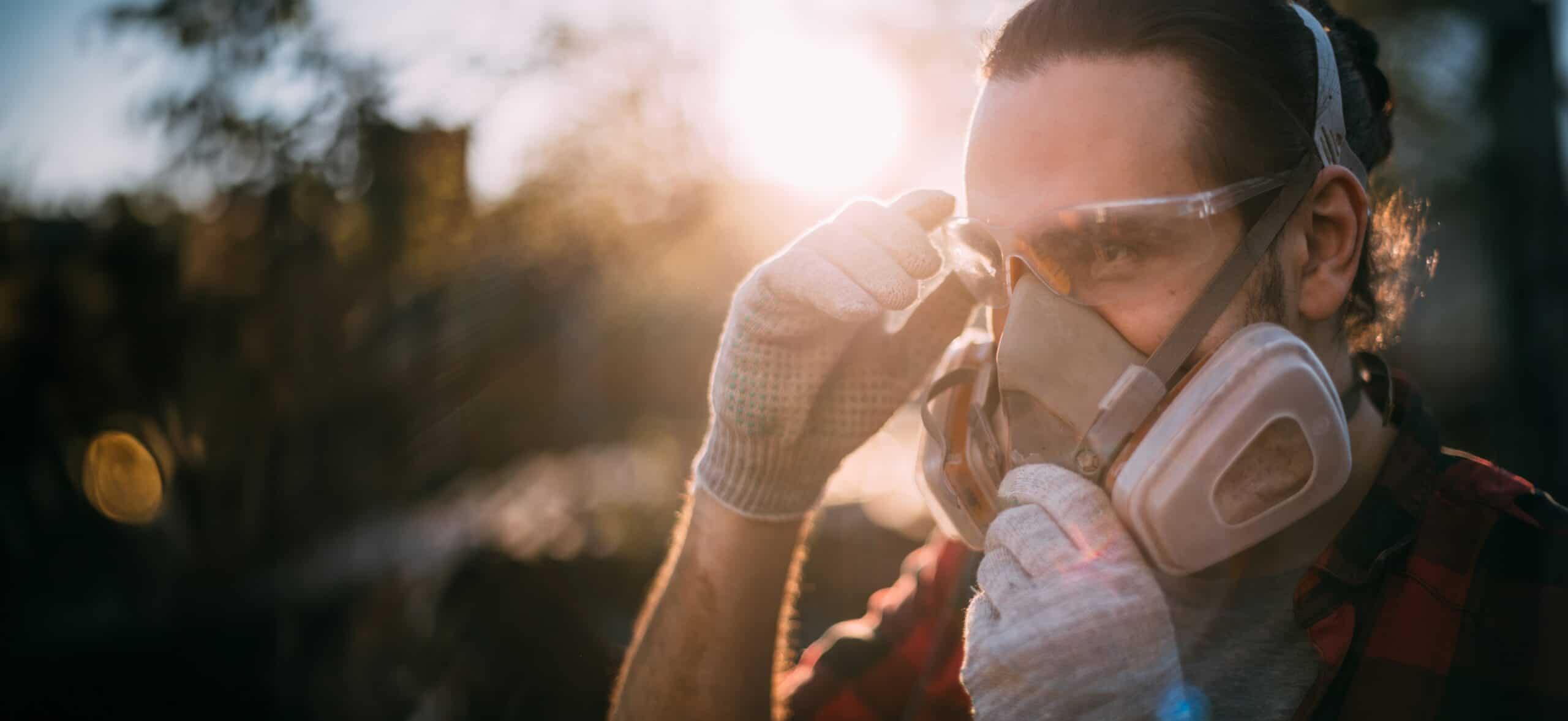Common sense practices when Upcycling
It’s important to prioritise safety
Sanding Wood
Sanding is a convenient way to remove coatings. Some prefer this method to using a paint remover, and without going into the comparisons of sanding V’s stripping we are looking more into the hazards that come with each application.
Dust
Sanding as we all know creates dust, and dust is the most obvious hazard that comes to mind when considering sanding. Inhaling dust into the lungs can cause breathing problems and lead to lung diseases such as occupational asthma and lung cancer.
– Getting dust in the eyes can cause irritation and damage.
– Skin contact with wood dust can cause ulceration of the skin, irritation and dermatitis.
– Lead in varnish (can be found in 1920’s varnish) Red Lead Pigment, and toxic dust from solvent-based varnishes, polyurethanes, epoxy resins, and two-pack coatings etc.
Hand-Arm Vibration Syndrome
Regular exposure to vibration can lead to two types of permanent ill health: carpal tunnel syndrome (CTS) and hand-arm vibration syndrome (HAVS).
The symptoms and effects of CTS can include tingling, numbness, pain, and weakness in the hands. CTS can affect the ability to carry out work safely and to do everyday tasks.
Common Sense Practices
– Use on-tool extraction to minimise wood dust.
– FFP2 respirator masks are a better substitute for the common dust masks in the sense that they provide a much higher level of protection.
– Ensure all equipment, including dust extraction units, is regularly maintained and examined.
– Gloves marketed as “anti-vibration”, which aim to isolate the wearer’s hands from the effects of vibration, are available commercially. There are several different types, but many are only suitable for certain tasks, they are not particularly effective at reducing the frequency-weighted vibration associated with the risk of HAVS and they can increase the vibration at some frequencies.
Scraping Wood
Removing coatings with a scraper or Linbide scraper which does seem the safer way to go rather than sanding which can of course still create dust, so this can be just as hazardous to your health. Scraping can also be very harsh on the wood surface, and sanding is then always inevitable.
Common Sense Practices
– FFP2 respirator masks are a better substitute for the common dust masks in the sense that they provide a much higher level of protection.
– Ensure all equipment, including dust extraction units, is regularly maintained and examined.
Stripping Wood
Stripping furniture using Chemicals is one of the best and most preferred methods of removing an old coating before refinishing. The biggest health hazard to end-users is that there is usually no risk assessment taken when using these products around the home or workshop.
It is also important to consider the coating that you are removing. For instance, if the varnish is solvent-based, once the coating is softened, VOCs can be released which can also be hazardous. Try and do your homework when it comes to purchasing a paint remover. The health risks associated with hazardous paint removers are huge, mostly causing long-term or irreversible effects on your health.
Alternatively, a better solution is to use Eco Solutions Home Strip Paint & Varnish Remover to make your paint or varnish removal, quick, easy and most importantly safe. The product is water-based, non-toxic, non-hazardous, non-flammable, non-caustic, with no fumes, no skin burns, environmentally safe and much more. It is a wet working system which means there is no harmful dust created which can cause respiratory problems. It is one product that does all.
Common Sense Practices
– Substitute hazardous substances with less toxic alternatives when possible.
– Utilise extraction ventilation and RPE when working with hazardous chemicals or coatings.
– Always wear protective clothing and gloves, and ensure good general ventilation.
The Clean Down
Cleaning furniture with turpentine or solvents can pose several hazards, both to your health and to the environment. Here are some potential hazards:
Health Risks:
– Inhalation: Breathing in fumes from turpentine or solvents can irritate the respiratory tract and cause headaches, dizziness, nausea, and even unconsciousness if inhaled in high concentrations.
– Skin Irritation: Direct contact with turpentine or solvents can irritate and dry out the skin, leading to dermatitis or chemical burns.
– Eye Irritation: Contact with these substances can cause irritation or damage to the eyes.
– Allergic Reactions: Some people may be allergic to the chemicals in turpentine or solvents, leading to more severe reactions.
– Fire Hazard: Turpentine and many solvents are highly flammable. They can easily ignite if exposed to a flame or spark, leading to fires or explosions.
Common Sense Practices
– Always wear protective clothing and gloves, and ensure good general ventilation.
– Use a non-toxic surface prep cleaner
Alternatively, a better solution is to use Eco Solutions Home Painters Prep Professional Strength is the safer option for surface prep for painting and refinishing. Our water-based formula is easy to use, with no mixing required. The Eco Alternative 5in1 product for sugar soap, stain removal, de-waxing etc. Prepare surfaces for re-painting and refinishing or just clean and brighten a variety of substrates. Remove all types of wax, grease, oil, dirt, stains, adhesive residues, and paint splashes too!
Painters’ Prep can be used indoors with no need to wash off. Just spray on and wipe clean with a damp cloth. Trade Strip Painters Prep cleans painted drywall and other hard surfaces quickly. Perfect for DIY and professional use.
It’s about being proactive rather than reactive, and it can make all the difference in maintaining a safe home or workshop environment. Remember to review and supervise the work environment to ensure that safety controls are properly used. Stay Safe & Stay Healthy.

